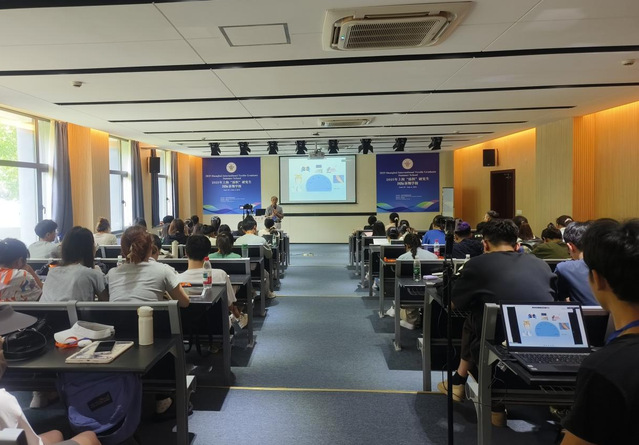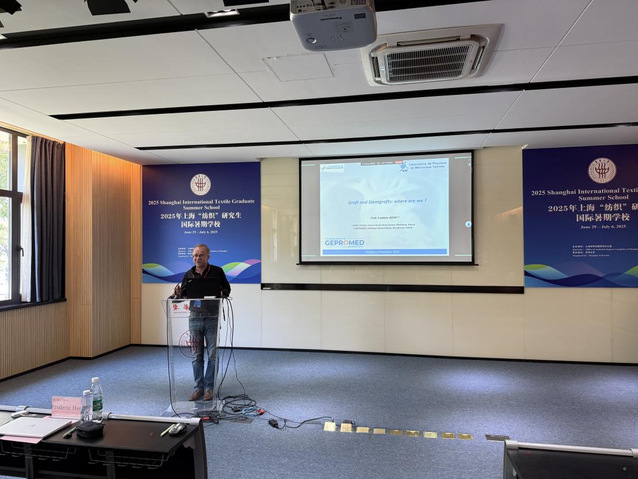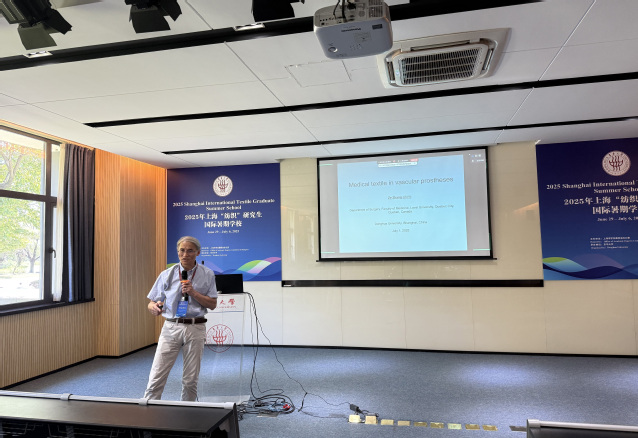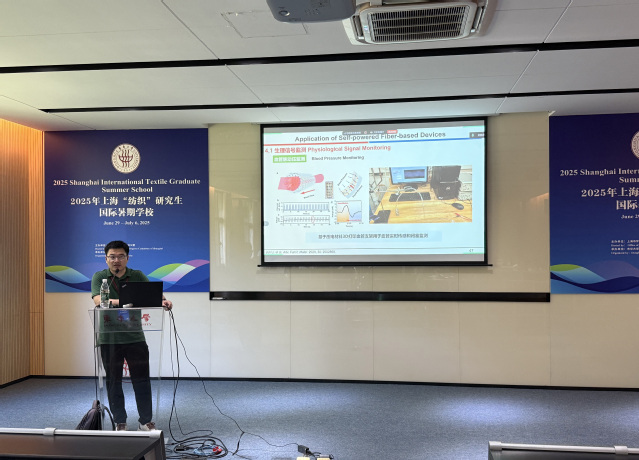2025 Shanghai International Textile Graduate Summer School Teaching Briefing
Issue 2 July 1, 2025 E-mail: fzsqxx@dhu.edu.cn
2025 organizing committee of Shanghai Textile Graduate International Summer,
written by: Han Qi
On July 1st, Professor Frederic Heim from the University of Haute-Alsace in France, Professor Ze Zhang from Laval University in Canada, and Professor Zhao Fan from Donghua University delivered excellent academic presentations.

(Classroom scene)
Professor Frederic Heim focuses on the research of surgical suture materials: Single-strand suture lines have good sliding properties and strong antibacterial properties, making them ideal choices for thin tissue repair; Multi-strand suture lines are flexible and have stable knots, suitable for laparoscopic surgeries. Suture lines achieve degradation through two mechanisms: hydrolysis and enzymolysis. In terms of safety, increasing the number of polyester single-strand ligation loops significantly enhances strength, and the combination of carbon dioxide laser softening and tissue adhesive enhances the material strength; The antibacterial coating of polyglycolide-ethylene glycolate can continuously release drugs (such as moxifloxacin), inhibiting postoperative infections. The reverse-spike suture technique has developed over half a century. The laser cutting process precisely controls the geometric parameters of the reverse spikes, significantly enhancing the grip force on tissues. The future development direction focuses on intelligent degradation material regulation, innovative multifunctional composite coatings, and specialized materials for minimally invasive surgeries. Professor F. Heim emphasizes that the key to promoting innovation lies in interdisciplinary deep cooperation between textile engineering, materials science, and clinical medicine.

(Professor Frederic Heim)
Professor Ze Zhang systematically reviewed the history of artificial blood vessels. The origin can be traced back to the observation of internal membrane formation in sutures in the late 19th century. In 1948, Voorhees' accidental discovery inspired the birth of fabric blood vessels. In the 1950s, nylon and polyester were successively used for arterial replacement. In 1957, Zhong Shifan first used silk, and in 1981, Pan Zhi/Rao Tianjian developed the first ePTFE graft in China. Modern materials have their own advantages: polyester for large diameters, high strength and stability, ePTFE for small diameters, good anticoagulation properties, etc. The structure has been continuously optimized, from early weaving to introducing bristles to enhance anchoring and external reinforcement to prevent collapse. Currently, the most widely used is coated knitted polyester. At present, small-diameter blood vessels remain a bottleneck, mainly due to thrombosis, intimal hyperplasia, and the lack of a complete lining of functional endothelial cells. Tissue engineering uses autologous cells and scaffold to build blood vessels outside the body as a cutting-edge direction. Professor Ze Zhang pointed out that the key challenges lie in: understanding how the blood-material interface induces endothelialization, ensuring long-term mechanical stability, achieving precise radial compliance, and strengthening the deep collaboration between material scientists and clinical doctors.

(Professor Ze Zhang)
Professor Zhao Fan expounded on the crucial role of electrical stimulation technology in tissue repair. It utilizes direct current, alternating current, or pulse currents to promote wound healing through direct contact or non-contact coupling methods, accelerating the elimination of inflammation, cell proliferation, and collagen remodeling processes. Compared to drugs, electrical stimulation has core advantages such as non-invasiveness, precise controllability, multi-functionality, low side effects, and no dependence. Self-powered technology captures environmental energy to provide power for electrical stimulation, and fiber-based devices can be fabricated through spinning and weaving techniques. Its applications focus on three points: passive physiological monitoring, intelligent tissue repair, and responsive drug delivery. This technology integrates multiple disciplines and is driving the development of precision medicine.

(Professor Zhao Fan)

